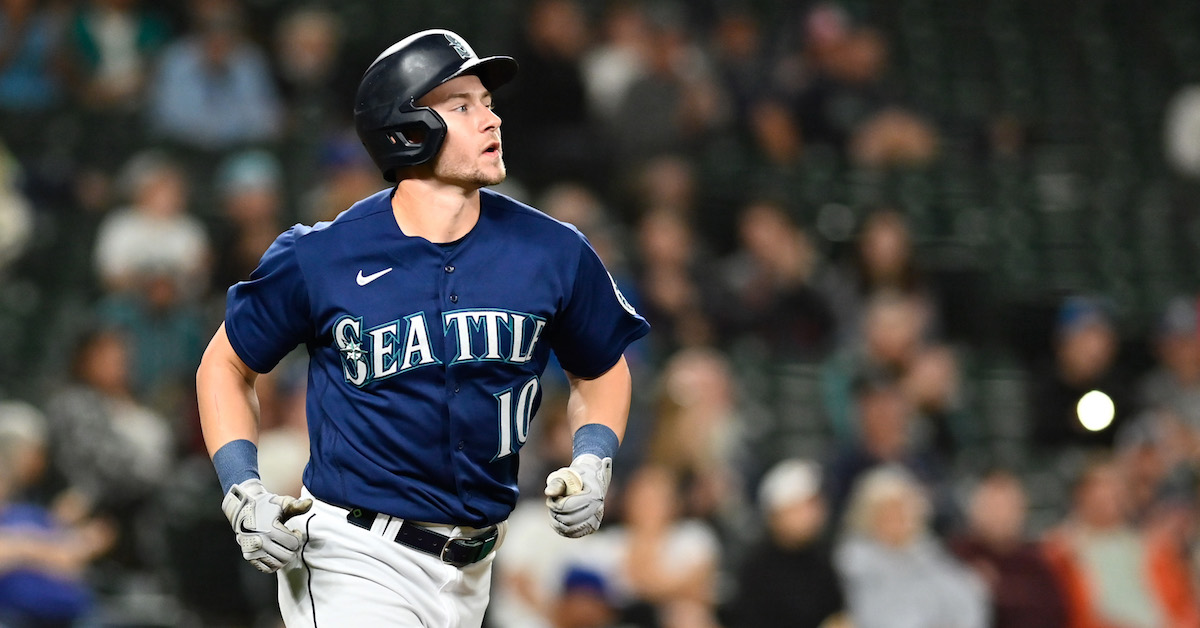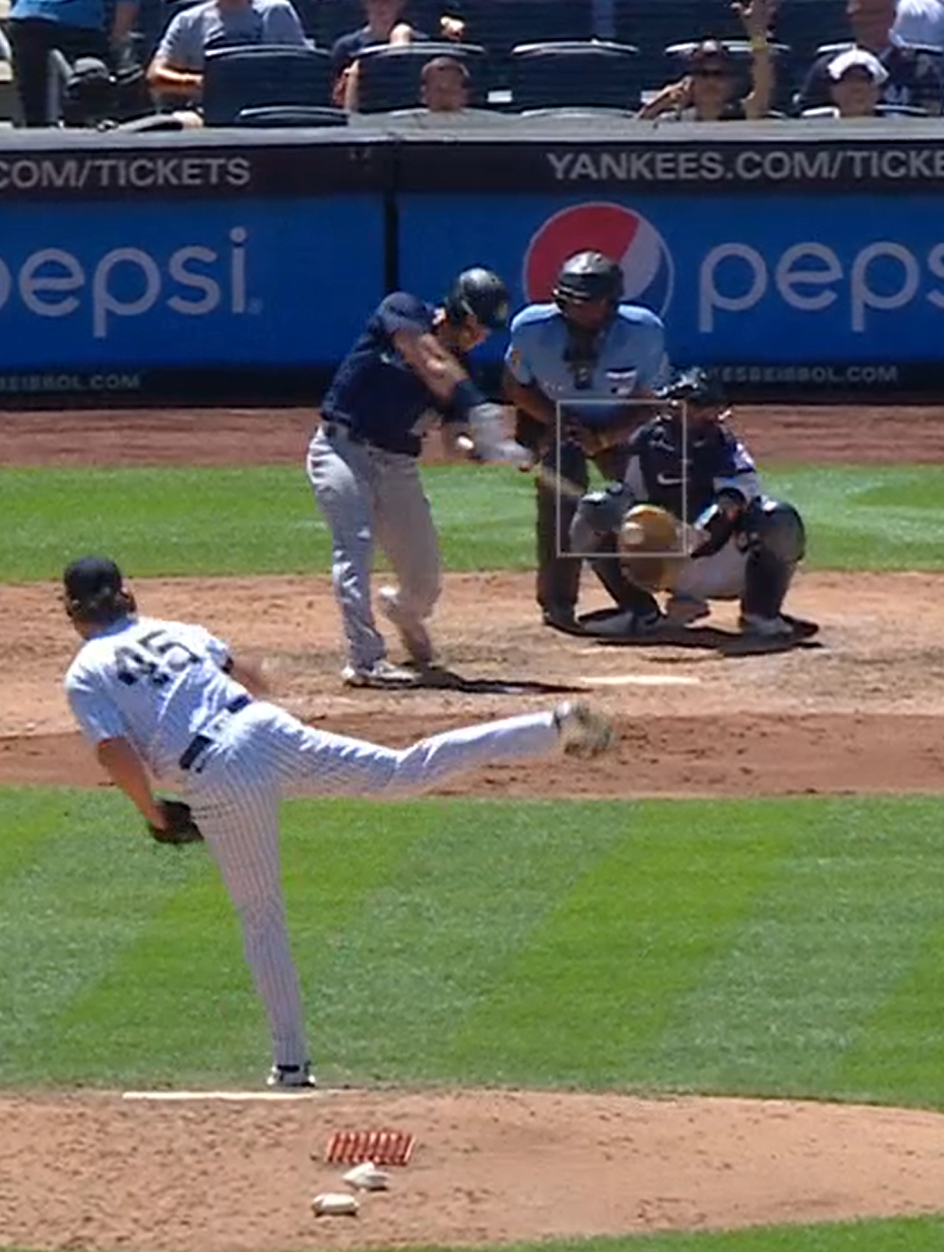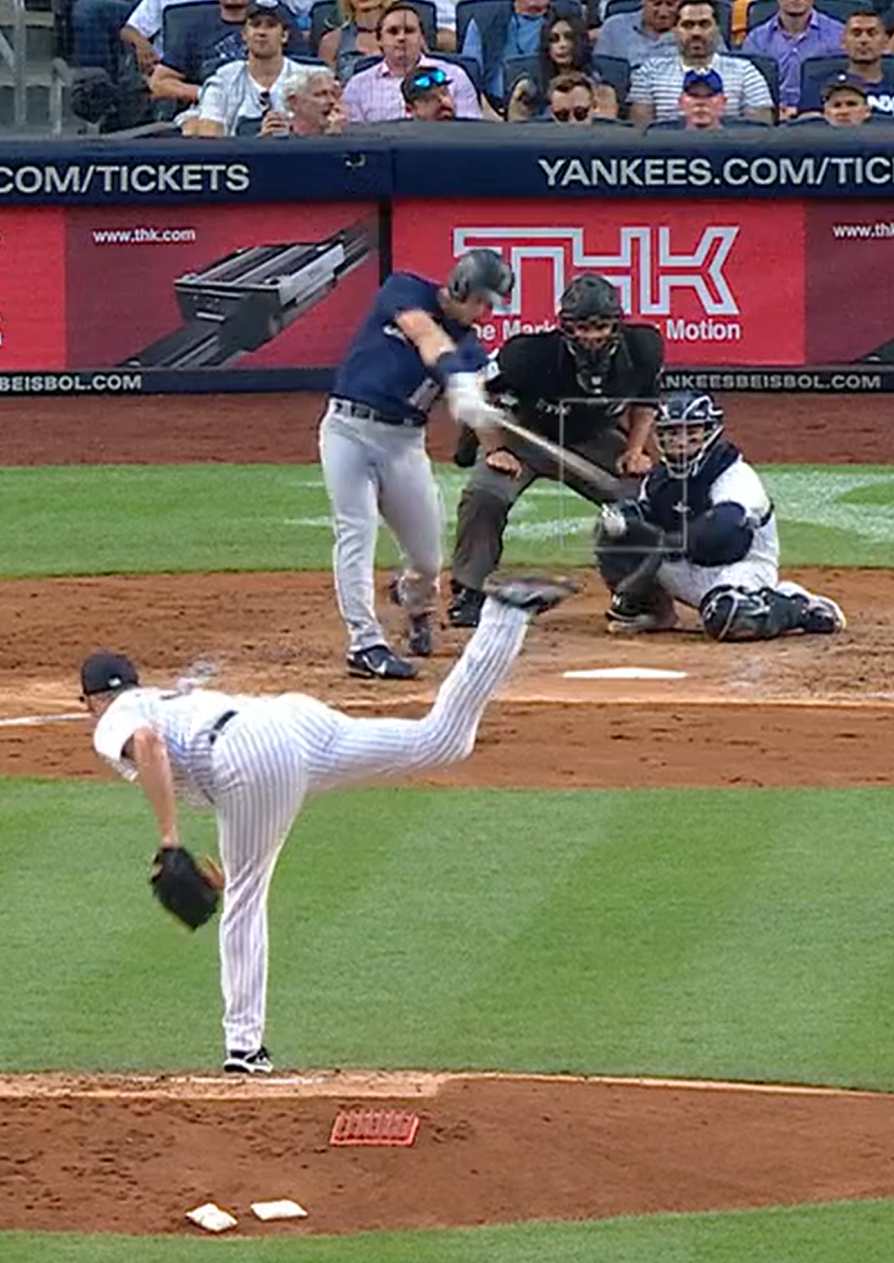Jarred Kelenic Is Making Progress

The life of any top prospect is filled with pressure, but for Jarred Kelenic, that pressure might have been even greater than usual. Being the marquee prospect in a blockbuster trade must put extra weight on a player’s shoulders. For a time, it looked like the Mariners had pulled one over on the New York Mets. Kelenic was ranked fourth overall entering the 2021 season as a 60 FV prospect, and was viewed as one of the first in a wave of young players meant to save the Seattle Mariners from a protracted playoff drought. But the discourse around the trade that sent him to Seattle — in which he, Jay Bruce, Gerson Bautista, Justin Dunn and Anthony Swarzak went to the Mariners while Robinson Canó, Edwin Díaz, and $20 million went to the Mets — has flipped. Kelenic has struggled in his time in the majors, while Díaz has struck out half the batters he’s faced in 2022. Sometimes prospects get the chance to adjust to the big leagues in relative quiet, but Kelenic’s first 400 plate appearances have come with a high level of scrutiny, and his struggles have forced us to reconsider his ceiling as a hitter.
Yet Kelenic has recently made some strides. In 2021, he was bad against breaking balls, posting a .214 wOBA against them. Jumping ahead to 2022, Kelenic’s issues with breaking balls became even more apparent. In the season’s early going, his wOBA fell even further, down to .093. That’s not a passable mark for a quality big league hitter, and Kelenic was sent down in the middle of May. After a few months in the minors, he got another chance in August, but he had barely finished his cup of coffee before being optioned again.
After Kelenic’s first demotion, Jarrett Seidler of Baseball Prospectus explored the outfielder’s struggles with breaking balls and offspeed pitches. In the piece, Seidler looked to explain the cause of Kelenic’s swing-and-miss issues, and whether he and other evaluators could have seen them coming. Seidler noted that Kelenic’s issues had less to do with his bat speed or bat path, and more to do with his lack of breaking ball recognition. Hitting breaking balls is a two-fold process. A hitter must first see the change in spin and speed, and then relate that to how they adapt their body and swing. Making the jump from mediocre breakers with inconsistent location to deceptive breakers with great shape and location is a key part of any minor league hitter’s transition to the majors. Unfortunately, Kelenic’s adjustment period has been a protracted one, involving plenty of trial and error. His swing has gone through multiple iterations already in 2022, with each failing. Here is how he has fared month-to-month against different pitch types this year:
| Month | Pitch Type | Number | Percent | Whiff% | wOBA | xwOBA |
|---|---|---|---|---|---|---|
| Mar/Apr | Fastballs | 113 | 43.6 | 23.7 | 0.423 | 0.358 |
| Mar/Apr | Breaking | 94 | 36.3 | 45.0 | 0.066 | 0.103 |
| Mar/Apr | Offspeed | 52 | 20.1 | 53.1 | 0.097 | 0.163 |
| May | Fastballs | 61 | 55.0 | 17.2 | 0.255 | 0.353 |
| May | Breaking | 30 | 27.0 | 57.1 | 0.197 | 0.123 |
| May | Offspeed | 20 | 18.0 | 71.4 | 0.000 | 0.051 |
| August | Fastballs | 52 | 56.5 | 25.0 | 0.221 | 0.221 |
| August | Breaking | 31 | 33.7 | 42.9 | 0.013 | 0.013 |
| August | Offspeed | 9 | 9.8 | 14.3 | 0.739 | 0.475 |
| September | Fastballs | 83 | 46.9 | 22.0 | 0.461 | 0.468 |
| September | Breaking | 67 | 37.9 | 34.5 | 0.130 | 0.247 |
| September | Offspeed | 27 | 15.3 | 23.1 | 0.315 | 0.441 |
As you might expect given his struggles, pitchers have thrown Kelenic plenty of breakers lately. Despite that season-high breaking ball rate, however, Kelenic has made marginal progress in cutting down on whiffs versus that pitch group. That hasn’t necessarily resulted in great outcomes, but when you compare his performance to previous months, it constitutes a pretty significant jump.
Given Kelenic’s breaking ball recognition issues, I think it’s important to focus on the marginal adjustments and improvements. From a mechanical standpoint, Kelenic needs to put his body in a better position to hit these pitches even if his recognition of them is a work in progress. The adjustments he makes can also work in both directions, with the pitch recognition potentially helping the mechanics and the mechanics helping the pitch recognition. So let’s examine Kelenic’s adjustments, proceeding chronologically through 2022. In this exercise, we’ll lock in on the mechanical changes while keeping Kelenic’s general comfort at the plate in mind. We’ll begin with these two swings from April, with the first on the 10th and the second on the 27th:
Some hitters will try to address their struggles within their current swing rather make more significant changes, but it only took Kelenic and his coaches a few weeks to realize he was out of sync and needed to make a larger adjustment. Noticing that your current setup/swing isn’t working is an important part of the development process; the next step is understanding what changes will put you in a better position to succeed. Now, on to May:
This is my least favorite iteration of Kelenic this year. The swing here is disconnected every step of the way. His hand load is non-existent. Yes, his hands move, but there is little to no separation between his upper body and his hips. In other words, he is creating no stretch, which completely saps a hitter’s power and ability to hit velocity. Kelenic had handled fastballs well in his career despite his overall struggles, but struggled against them in May. This swing (and the resulting performance) led to him being optioned to the minors.
Given his struggles, I think it was important for Kelenic to focus on how he could keep his body and bat path in a more versatile position to hit pitches in a variety of zones. In watching his swings, I’ve been most concerned with the lack of variance in his vertical bat angle (VBA) on a pitch-to-pitch and zone-by-zone basis. For those unfamiliar with VBA, it’s simply the angle of a hitter’s bat at the moment of impact or potential impact. VBA is location and pitch dependent, meaning it should change as different pitches move up and down in the zone. If it doesn’t vary, then you have issues like Kelenic has had. The following swings from August will make this clearer:
Against Gerrit Cole, Kelenic’s swing was phenomenal. He adjusted his body to go down and get a low pitch by changing the angle of his back and shoulders to get his hands over the ball while getting his barrel under it. Against Jameson Taillon, though, he swings as if the pitch is in the middle to upper parts of the zone. Pitch recognition absolutely plays a role in this, but you have to be able to adjust your body when you’re beaten by a pitch’s speed. The freeze-frames below show what I mean:


His vertical bat angle is more or less the same on two different pitches in the same zone. I would have used two swings from the same at-bat if I could have, but that wasn’t possible here. Nevertheless, these two swings illustrate a big reason why Kelenic has trouble with breakers. He can adjust his body to go down and get a fastball, but on a loopy curve, he doesn’t get deep into his hinge like he did on the heater. As a result, he lets his barrel and hands stay on top of the ball, leading to a whiff.
Kelenic’s September adjustments seem to have been targeted at addressing this issue. Whatever his stance, he needs to cleanup his connection between his upper and lower body on slower pitches. If he can somehow stay in his hip hinge longer, he’d give himself a better shot at not whiffing on every breaking ball.
I absolutely love this adjustment from Kelenic. For the first time in at least a year, he is back to staying quiet in his hands during his stance. When you get to the big leagues and face the best breakers in the world, the answer to hitting them usually isn’t more movement. That’s what he tried on multiple occasions in 2022, but he seems to be settling into this stance, as he should. This is the hardest (106.8 mph exit velocity) he has hit any breaking ball in the lower third or out of the zone all season! Yes, I know it was an out, but we can’t expect Kelenic to suddenly be a great breaking ball hitter. As I said before, the adjustments and improvements are likely to be marginal.
Improving your whiff rate and xwOBA on breakers after a few weeks in the minors should be celebrated. The best players make pitch-to-pitch adjustments, but Kelenic still has fewer than 600 plate appearances in the majors and is working his way through significant struggles. Relaxing his bat on his shoulder has put more of a focus into how he can use his legs and hips to react to different speeds and zones. That’s a big step forward.
I know the focus of this piece has mainly been slow pitches, but I should mention that Kelenic also hit his first home run of the season against a lefty on a pitch up and in. That swing and the one against Tyson Miller came in locations he has struggled with all season! If a player’s adjustments suddenly unlock two areas where he can now hit the ball hard, I’d say the change is a positive one.
Given his prospect pedigree, we want Kelenic to suddenly lift himself into the superstardom that Julio Rodríguez has, but that’s just not realistic. What is realistic is seeing him make improvements in his upper and lower half connection during his load, and successfully varying his VBA against different pitches and zones. If he can keep stick with that and slowly improve his pitch recognition, he could turn into a very good hitter. I know it isn’t what we expected, but seeing Kelenic make hard contact on breakers is still exciting.
Esteban is a contributing writer at FanGraphs. One of his main hobbies is taking dry hacks every time he sees a bat.

I recently took my son to a random Las Vegas Aviators game recently only to realize when lineups were announced that they were playing Tacoma and Kelenic was there. It seemed like we were the only two people in our seat area who knew he was once a top prospect and that he has played at MLB level a few times already. I even have a rookie baseball card of him.
Kelenic proceeded to hit two bomb homeruns and a double that night and looked like head and shoulders the best player on the field. Defense as well, with range chasing down in CF what we thought was a double and a strong arm even during warmups. By 7th inning we were telling his story to guy next to us when he said “this kid is having heck of a night – who is he?”
Kelenic seems like he is stuck in the abyss of too good for AAA but not quite good enough for MLB pitching. Hoping he figures it out and this timely article is right that he might be on that path. From what I saw too live that night he seems like a hard worker and overall nice kid, but his window is slowly closing and that pressure must be immense on him.
Yeah, that’s the Quad-A zone. Hopefully he gets better than that though.